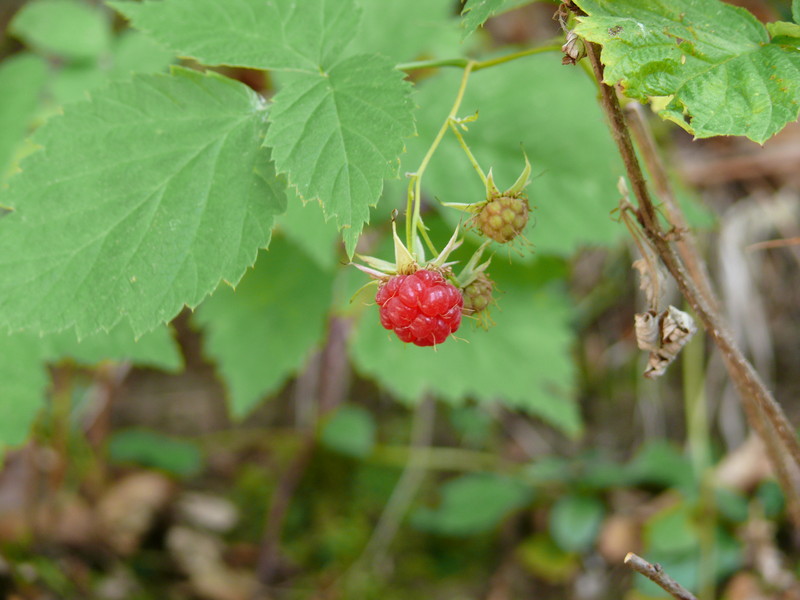Raspberry
Rubus idaeus L.
Rosaceae
Raspberry has been known since ancient times and mythology teaches us how the raspberry, once white became pink…
Zeus fut caché en Crète par sa mère qui craignait que son père, Cronos, ne le dévore. La nymphe Ida, fille du Roi de Crète et nourrice de Zeus, voulut cueillir des framboises pour apaiser les pleurs de son protégé, des pleurs qui pourraient attirer l’attention de son père ! Mais en cueillant des fruits, elle s’égratigna le sein et le sang de la blessure teinta la framboise en rose, couleur qu’elle gardera.
Historically, the oldest botanical reference of raspberries comes from the ancient historian Pliny, who mentions it in his book Natural History after the blackberry, another Rosaceae: “rubus idaeus is so called, because there is no other on Mount Ida. It is more tender, smaller, has less branches and less thorns, and it grows under tree shade… it is to be taken with water in case of stomach aches. The raspberry will retain its name as the “blackberry of Mount Ida”, when Carl von Linnaeus will describe it 1700 years later.
Raspberry is no longer present on Mount Ida, where all the forests have been cut, but it is possible that it has never even grown there because it is absent from all of the Mediterranean area. It is found throughout all the mountains of Europe, under the conditions described by Pliny, near forest borders.
It is from this wild raspberry that will be created the multiple varieties, in the 16th century. The fruits are then grown for perfumes, making drinks or remedies. The most famous one being raspberry vinegar, now used for salad dressings and on meats, but once used as a remedy to treat sore throat, as a gargle.
This use is justified by the astringent * and anti-inflammatory properties of the plant, which are also found in its leaves, harvested for herbalism.
La tisane de framboisier
Pour profiter de ses propriétés, une simple infusion des feuilles suffit … mais quelques règles sont utiles :
Prenez quelques feuilles sèches de framboisier, froissez les de manière à augmenter la surface de plante en contact avec l’eau et faciliter le passage des principes actifs dans l’infusion.
Placez une cuillère à soupe bien pleine de plante (3 à 5g) dans une théière.
Versez le volume d’une grande tasse (200ml) d’eau frémissante puis couvrez immédiatement. Laissez infuser 10 minutes puis filtrer. Cette infusion peut se boire chaude ou froide, particulièrement pour les gargarismes. Dans ce cas elle est conservée au réfrigérateur.
This herbal tea can be used against sore throats or angina in gargling, or to fight inflammations of the stomach and intestines in infusion. It can be taken two to three times a day, by cures or periodically as indicated.
This plant is regaining its popularity, impulse coming from North America and Canada, where midwives have discovered its beneficial effects when preparing for child birth. In fact, raspberry leaves relax the uterus and regulate contractions. Its use is carried out under medical supervision, as part of the overall monitoring of pregnancy.
*Astringent : se dit d’une substance qui resserre et assèche les tissus, et peut faciliter leur cicatrisation.
